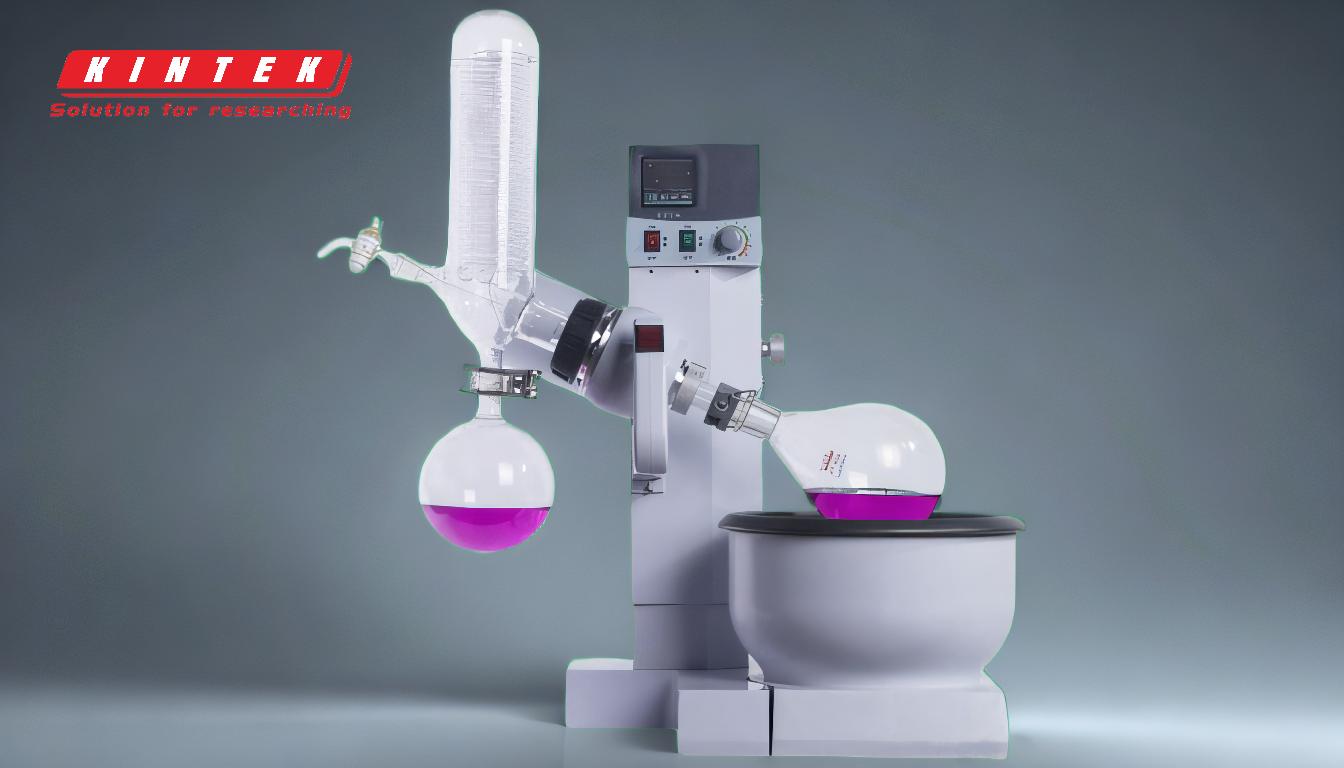The rotation speed of a rotary evaporator (rotovap) is a critical parameter that directly impacts the efficiency of solvent evaporation and the integrity of the equipment. The optimal rotation speed typically ranges between 0 and 280 rpm, depending on the specific application, solvent type, and equipment design. For benchtop-scale rotary evaporators, a speed of 250–280 rpm is often recommended to maximize turbulence and enhance evaporation rates. However, it is essential to balance speed with other factors such as mechanical stress on the equipment, the nature of the solvent, and the heat sensitivity of the sample. Overly high speeds can lead to mechanical damage or reduced evaporation efficiency, while insufficient speed may result in poor solvent removal. Therefore, the rotation speed should be carefully adjusted based on the specific requirements of the experiment and the limitations of the equipment.
Key Points Explained:

-
Recommended Rotation Speed Range:
- For benchtop-scale rotary evaporators, a rotation speed of 250–280 rpm is recommended to maximize turbulence and ensure efficient solvent evaporation.
- The general range for most rotary evaporators is 0–220 rpm, which provides a balance between evaporation efficiency and mechanical stability.
-
Factors Influencing Rotation Speed:
- Solvent Type: Different solvents have varying evaporation rates, which may require adjustments in rotation speed.
- Bath Temperature: Higher temperatures can increase evaporation rates but may also necessitate lower rotation speeds to prevent sample degradation.
- Vacuum Level: A stronger vacuum can enhance evaporation, allowing for lower rotation speeds.
- Condenser Efficiency: Efficient condensation recovery units can handle higher rotation speeds without compromising performance.
- Sample Sensitivity: Heat-sensitive samples may require lower rotation speeds to avoid thermal damage.
-
Mechanical Considerations:
- High rotation speeds can cause mechanical stress on the equipment, leading to wear and tear or even damage.
- It is crucial to avoid exceeding the recommended speed limits to maintain the longevity of the rotary evaporator.
-
Evaporation Rate Optimization:
- The evaporation rate is influenced by multiple factors, including rotation speed, bath temperature, vacuum level, and condenser efficiency.
- While higher rotation speeds can increase turbulence and evaporation rates, there is a point of diminishing returns where further increases in speed may lead to reduced efficiency or equipment damage.
-
Practical Recommendations:
- Start with a moderate rotation speed (e.g., 150–200 rpm) and adjust based on the solvent and sample requirements.
- Monitor the evaporation process closely and make incremental adjustments to the rotation speed to achieve optimal results.
- Avoid setting the rotation speed too high, as this can lead to foaming, splashing, or sample loss.
-
Equipment-Specific Considerations:
- The size and design of the rotary evaporator flask can influence the optimal rotation speed. Larger flasks may require lower speeds to maintain stability.
- Always refer to the manufacturer’s guidelines for specific recommendations on rotation speed and other operational parameters.
By carefully considering these factors and adjusting the rotation speed accordingly, users can achieve efficient and safe solvent evaporation while preserving the integrity of both the sample and the equipment.
Summary Table:
| Aspect | Details |
|---|---|
| Recommended Speed Range | 250–280 rpm for benchtop-scale; 0–220 rpm for general use |
| Key Factors | Solvent type, bath temperature, vacuum level, condenser efficiency, sample sensitivity |
| Mechanical Considerations | High speeds cause stress; avoid exceeding limits to prevent damage |
| Evaporation Optimization | Balance speed, temperature, and vacuum for optimal evaporation rates |
| Practical Tips | Start at 150–200 rpm; monitor and adjust incrementally to avoid foaming or sample loss |
| Equipment-Specific Tips | Follow manufacturer guidelines; consider flask size and design |
Optimize your rotary evaporator performance—contact our experts today for personalized advice!












